European ground-based short-range air defense systems: the return
MBDA's self-propelled short-range air defense missile system from MBDA is an affordable armament complex that includes a high-powered Mistral 2 rocket and a self-defense 12,7-mm self-defense machine gun (mounted on an RTD Sherpa multi-purpose combat chassis). )
The battle is in motion ... As in the heyday of the Cold War, self-propelled near-by and extra-close-action air defense systems (POVBD and POSBD) are again becoming essential weapons today, although in less than one human generation anti-aircraft artillery has been replaced here by lightweight high-precision missiles. None of the armed forces can act without them, especially when deployed and military operations abroad.
The man in the street most often considers modern air defense systems (stationary or mobile) as a set of specialized anti-aircraft guns. weapons, mainly designed to protect against low-altitude air threats, mainly helicopters and any slow-flying short-range aircraft aviation support, and today already from (new to many) unmanned aerial vehicles capable of carrying out subtle attacking actions.
Of course, since richer countries, with all the evidence, prefer complex and highly efficient multi-level anti-aircraft systems, including entry-level air defense systems (anti-aircraft artillery and light missiles) plus networked anti-ballistic systems of medium and long-range, there is a constant demand to protect "in motion" on very close range any combat means that can be subjected to attacks in the air. In the field of air traffic control systems, not too many new systems emerged from the 80-s ... the ubiquitous Toyota pickup with an established MANPADS or large-caliber machine gun remains king on the battlefield, especially in asymmetrical fighting, no matter how cruelly the French helicopter crashed Mali in 2013 year and several cases of loss of Russian helicopters in Syria in 2016 year.
Interestingly, just a few months ago, the command of the American Army in Europe, which is definitely not the trendsetter it was around 25 years ago, warned that on the continent, the capabilities of the near-air defense are degrading today. Even the National Commission for the Future of the Ground Forces, in its report issued in 2006, noted that this area is "unacceptably modernized". For the commander of the US ground forces in Europe, Colonel General Frederick Hodges, the biggest challenge of the decade is beyond any doubt in countering reconnaissance air systems or UAVs with a bomb load, whose presence on the battlefield is growing and is of great concern.
The German Flakpanzer IV Wirbelwind, armed with four X-NUMX-mm Flak 20 cannons in an open turret, was the most powerful anti-aircraft system produced during the Second World War. It has served as the basis for many of the Soviet Cold War Air Defense Forces systems.
Little instructive stories
In the second half of 1943, Nazi Germany began to lose its air superiority on all fronts, and its army was plagued by the Allied air forces. On the western front, the American P-47 Thunderbolt and P-51 Mustang aircraft and the British Hawker Typhoon and Tempest, armed with bombs and missiles, devastated the Wehrmacht battle formations, immediately destroying hundreds Tanks and transport columns. The same thing happened on the Eastern Front, where the main striking power was represented by the red-star attack aircraft Il-2. Here, the German single-barrel 20-mm guns could not give a corresponding rebuff to the enemy due to limited firepower, because one or two shells were sometimes not enough to destroy the IL-2, and it was extremely rare to get more shells from a single line fired into the aircraft. However, a single hit from a 37 mm gun was usually enough to bring down an IL-2.
The Gepard anti-aircraft tank was manufactured by Krauss-Maffei Wegmann (KMW) for the Bundeswehr. He was in service with Belgium, Germany and the Netherlands and remains in service with Brazil, Chile and Romania.
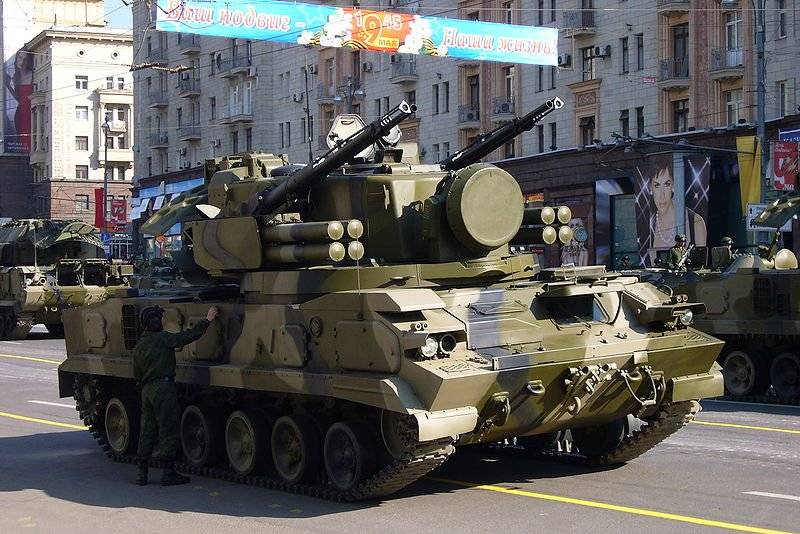
The 2X6 Tunguska installation (according to the NATO classification - SA-19 Grison) was developed to replace the Shilka ZSU 23-4. It is armed with two 30-mm guns (by the way, not least inspired by the Gepard installation example) and eight 9M331 missiles
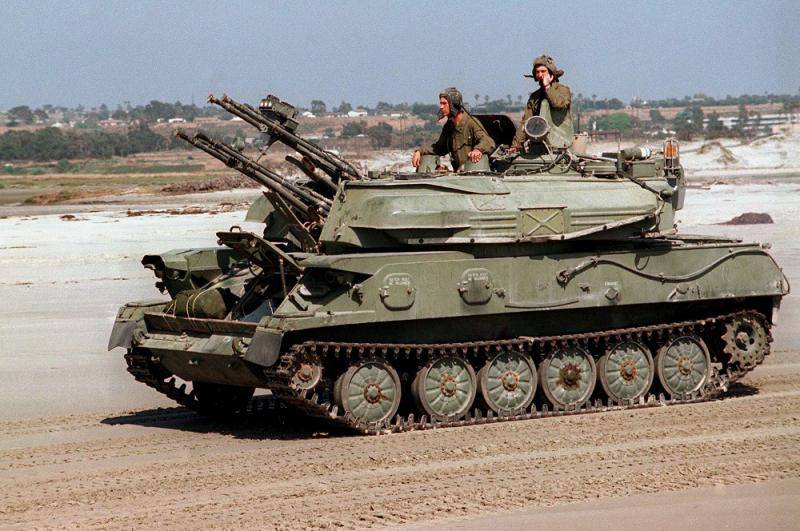
In preparing the US Marine Corps, the former Soviet ZNU 23-4 Shilka is used as part of a conditional enemy force
In order to cope with this annoying threat, the Wehrmacht combined anti-aircraft guns and vehicles. Thus, an anti-aircraft self-propelled unit (ZSU) was created on the basis of the PzKpfw IV medium tank, which received the Sd.Kfz index under the departmental armor identification system. 161 / 3. Its name "Möbelwagen" ("furniture van") received because of the external similarity in the stowed position (raised armor casters tools) with a furniture van (photo below). The first installation, bristling with a quartet of 20-mm cannons FlaK 38 (Flakvierling), was made at the end of 1943 of the year. These quad 20-mm guns, capable of providing 4 minutes of continuous fire (3200 shells), frightened allied coalition pilots who called them the "hell four".
In parallel with this weapon system, a single X-NUMX-mm gun of a larger caliber, the FlaK 37, was also used, which was installed around the Möbelwagen 43 to protect armored columns on the march. They were soon replaced by the excellent Wirbelwind and Ostwind Flakpanzer IV systems, which are responsible for the heavy losses of the American and British pilots who flew over France Belgium and the Netherlands. But that was before the latest system from the list of anti-aircraft installations - Kugelblitz FlaKpanzer IV was made in only five copies before the Ruhr area was captured by the allied armies. He had a dual 300-mm installation MK30 DoppelflaK, capable of shooting 103 shells per minute!
From a historical point of view, this is the first self-propelled anti-aircraft gun, manufactured in large quantities from 1936, the Soviet truck GAZ-AAA, equipped with four 7,62-mm Maxim ПМ1910 machine guns. The unit was widely used by the Red Army at the beginning of the Great Patriotic War.

A Finnish soldier checks the quad installation of Maxim machine guns on a Soviet GAZ-AAA truck seized in Karelia in 1941
Machine gun anti-aircraft machine gun installation M4 sample 1931 year
On the other hand, the American and British industries, not to mention the Soviet, developed at the same time self-propelled anti-aircraft platforms with large-caliber machine guns. However, due to the superiority in the air of their air forces, they were most often used as direct fire support of ground forces against tanks and other combat vehicles. As examples, British tank Crusader Mk.III / AAT or armored Staghound T17E2 AA, two armed 12,7-mm machine guns and American M2 antiaircraft system with four caliber guns M2 12,7-mm (known as "Four fifties", since their caliber 0.50), often installed on the platform of the M16 GMC half-track machine.
Although much less powerful than the German 20-mm anti-aircraft systems, they were at least widely available and more often used to suppress ground targets. However, none of the anti-aircraft installations had such a long life and such international fame as the 40-mm system of the Swedish (now British) company Bofors, which was one of the most popular anti-aircraft systems in the medium mass category used in World War II. part of the Western allies, as well as many countries of the Hitler coalition! A small number of these installations remain in service in our days in a number of countries, including Brazil. The M19 (Multiple Gun Motor Carriage) anti-aircraft self-propelled unit, based on the M24 Chaffee light tank chassis, which was equipped with a three-seat turret armed with two 40-mm Bofors cannons, was considered the best anti-aircraft self-propelled unit in the American army. The installation was carried out by Cadillac in the 1944-1945 years, by the end of the Second World War, it was in service with several units of the American army and was later used in combat operations during the Korean War. Its successor, the completely manual installation of the M42 Duster with the same guns based on the M41 chassis, became the main self-propelled charger in the US military at the end of the 50-s. Being a relatively effective system of the epoch for which it was created, by the time it became widespread, it certainly became ineffective against the high-speed reactive goals of the “sixties”.
This is the main reason why mobile self-propelled guns were subsequently replaced by first-generation self-propelled short-range anti-aircraft missile systems in the US armed forces, such as the MIM-72A / M48 Chaparral, at a time when some countries gained great advantages by operating self-propelled units, for example, the USSR with its own ZSU-57-2 (later Shilka and Tunguska with the addition of radar guidance). Germany with its Flakpanzer Gepard and France with its “30-mm pairing” AMX 13 DCA - all these anti-aircraft systems were equipped with radar detection and tracking. Nowadays, many of these self-propelled systems remain in service with several exotic armed forces, but in large armies for the most part are replaced by light rockets.
The Russian 9K33 Osa anti-aircraft missile system (according to the classification of the US and NATO SA-8 Gecko) remains a very powerful and mobile all-in-one near-air defense system and possibly one of the best, albeit very cumbersome. 9K33 became the first mobile anti-aircraft missile system, having its own radar. Several NATO countries, Greece, Poland, Romania and Bulgaria, are armed with a modernized version.
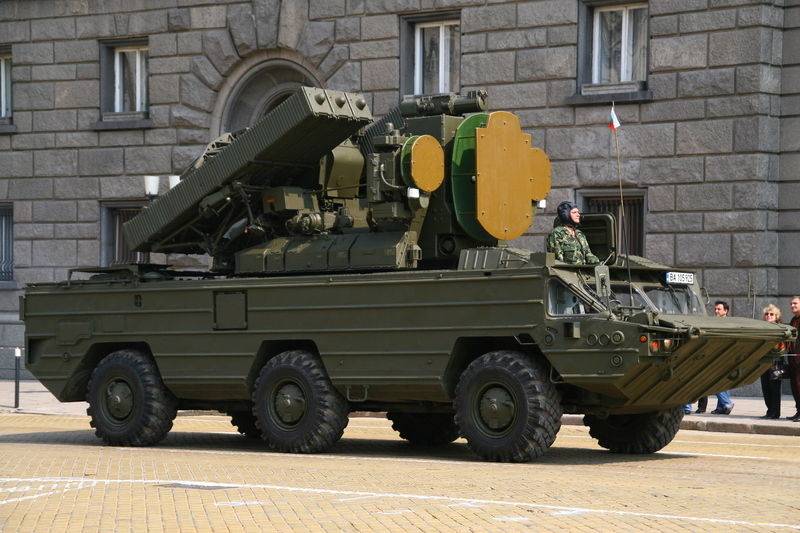
British Army's Alvis Stormer launches Starstreak laser-guided missiles.
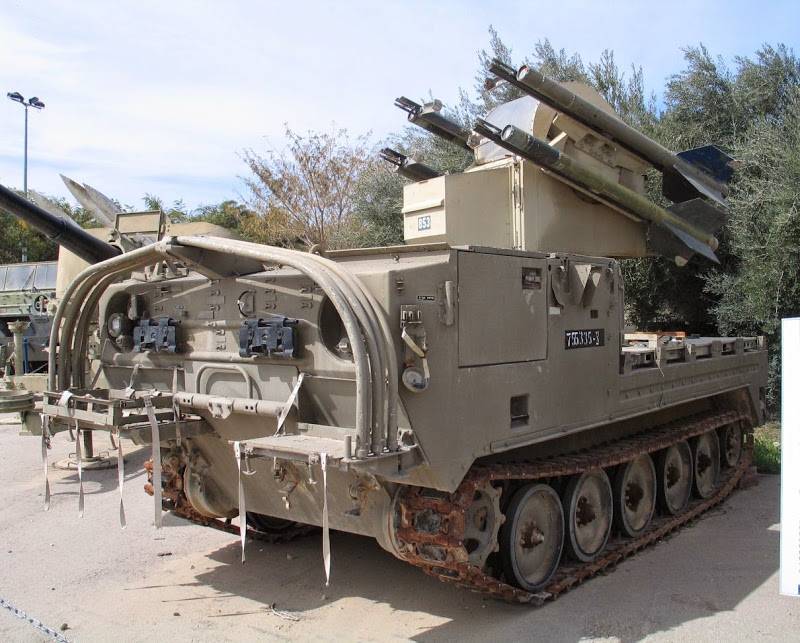
The need to launch AIM-9D Sidewinder air-to-air missiles from a ground platform led to the creation of the MIM-72 Chaparral self-propelled anti-aircraft missile system. MIM-72A can hit targets flying from 15 to 3000 meters and 500-6000 meters. He stood in service with the American Army from 1969 to 1997 a year. The main foreign customer was Israel, one of the Chaparral systems with four AM-9D missiles without its infrared seeker is shown in the photo
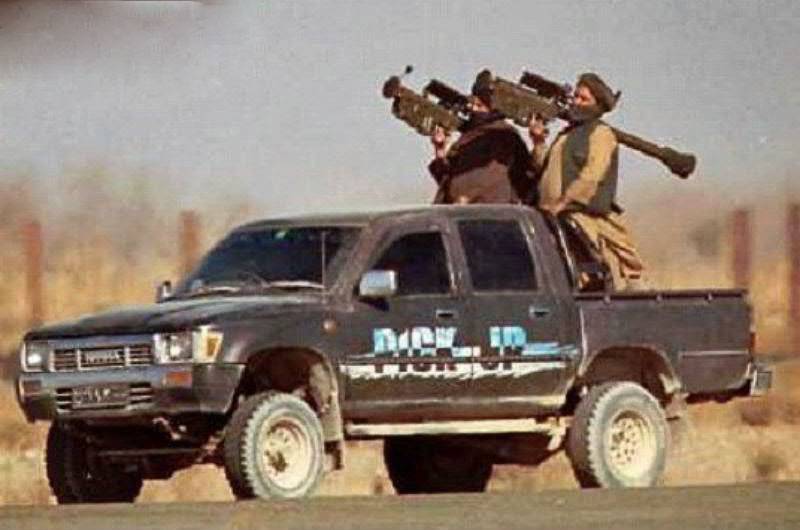
Temporary solutions typical for the countries of the third world: at a parade in the vicinity of Kabul, a Toyota pickup truck carries two Mujahideen with Stinger MANPADS. According to some reports, the victims of these complexes in the 9 years of civil war were about 350 Soviet helicopters and aircraft. Western military analysts attribute the Stinger MANPADS to the probability of hitting around 70%
Portable and portable air defense systems
The appearance of light ground-to-air missiles practically radically changed the whole balance of forces on the battlefield. PRZK (portable missile anti-aircraft systems) - this is a short-range systems, specifically designed for carrying and launching by one person. The real successor to the M4 antique quad-rifle anti-aircraft machine-gun of the 1931 model of the year installed on the platform of the GAZ-AA truck - MANPADS first appeared on the battlefield in the middle of the 60-s. Although initially these complexes were developed at the end of the 50s, they were truly not only an innovative solution to provide ground forces with effective all-view protection against low-flying enemy aircraft, but also a real step forward compared to traditional anti-aircraft artillery.
In contrast to anti-aircraft artillery, man-portable air defense systems are highly mobile and easily concealed systems, potentially capable of catastrophic destruction. That is why MANPADS has been given a lot of attention as a potential terrorist tool, mainly used against civilian and government targets and, above all, against defenseless civilian airliners.
To date, there are three types of MANPADS, which are determined by the type of rocket that is launched. When combined in several pieces, they also become the main armament of most of the existing self-propelled anti-aircraft gunships VOBD:
• Infrared rockets, which lead to a heat source, as a rule, an engine or a jet of outgoing gases.
• Missiles with a radio command guidance system, when the MANPADS operator captures and accompanies the target visually with an optical sight and transmits guidance commands to the rocket via radio.
• Missiles guided by a laser beam, when a rocket follows in the barrel of the beam and is aimed at a target light spot formed by a laser target designator.
Of all three types of light missiles, infrared-guided missiles are the preferred choice for near and extra close air defense. Their dependent infrared homing heads (GOS) are designed to search for a powerful source of infrared radiation. The first generation IR-GOS had a mirror-lens lens mounted on the gyroscope rotor and rotating with it, collecting thermal energy on the detector. The design of the GOS varies from manufacturer to country, but the principle remains the same. Due to the modulation of the signal, the control logic can tell where the source of infrared radiation is located relative to the direction of flight of the rocket. All first-generation seeker systems (1G) have operated in this way since 60's. In later second-generation (2G) designs that appeared in 70's, the rocket's optics rotate and the rotating image is projected onto a fixed sighting crosshair (a mode called a conical scan) or a fixed set of detectors that generates a pulse signal processed by a logical tracking device.
Most of the portable complexes of the last century use this type of GOS, like many short-range anti-aircraft defense systems and air-to-air missiles. The latest generation of rockets 3G uses infrared differential error detection and shape recognition. The next generation, currently being developed and not previously expected for 2025 of the year, will use significantly more expensive color-sensitive election systems (4G) with scanning in the focal plane at specific wavelengths.
Preferred tools for the destruction of ultra-close air defense systems are shot-and-forget infrared-guided missiles, for example, the European MBDA Mistral, the Russian Eagle (the NATO code Strela) from KBM and the American Stinger from Raytheon; in recent decades, they have all been produced in thousands of pieces. To this trio, you can add smaller systems: the Swedish Saab RBS 70 rocket and the Chinese CNPMIEC QW-2 (a copy of the original Soviet Eagle rocket). For their part, the British industry has developed unique short-range ground-to-air missiles with guided laser beams, such as the Thales Starstreak, which originates from the very successful Javelin / Starburst family of Shorts Missile Systems. The Starstreak / ForceShield three-headed rocket is known as the fastest short-range ground-to-air rocket in the world (Mach number 4). All of these weapons systems have a valid range from approximately 5 to 8 kilometers and can reach an altitude of 5000 meters with a very high probability of being hit the first time. The latest versions of all the above-named missiles have hardened homing systems capable of fooling infrared or laser counteraction systems. However, infrared-guided missiles are preferred by most armies in the world (and not just armies), since they remain the most affordable and better tolerate improper handling. Well, let the rest choose missiles with radar or laser guidance.
European short-range air defense systems are actively returning to the world market. Perhaps the best evidence of this is the high-tech Russian complex Thor (NATO designation SA-15 Gauntlet) from Almaz-Antey Corporation, and the MPCV budget complex from MBDA, installed on military vehicles of any type.
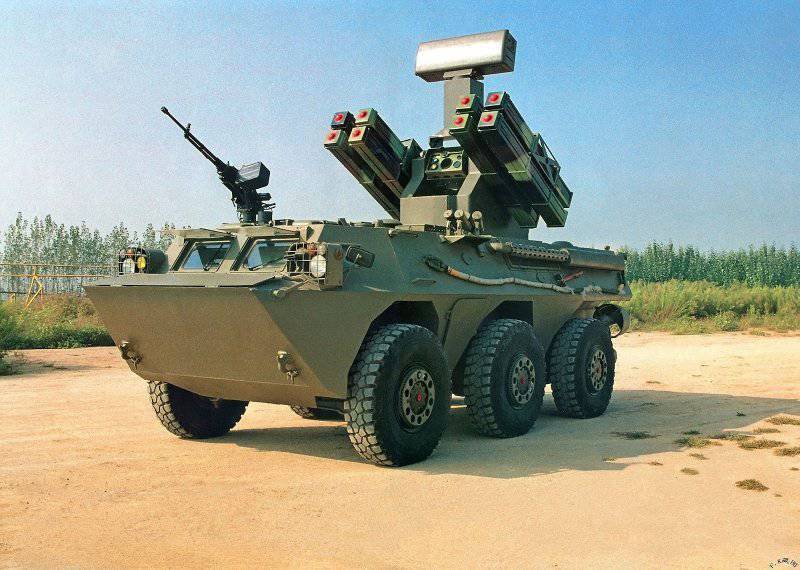
Modern Chinese complex near air defense Yi-Tian based on the chassis of the wheeled armored personnel carrier 8x8 ZBL-09. This new self-propelled system consists of two quadruple launchers equipped with TY-90 (Tian Van) ground-to-air missiles with a range of 500-6000 meters. The Yi-tian complex is guided by a thermal imager and X-band 3D radar, which can accompany a target the size of an airplane at a distance of 18 km and a cruise missile at a distance of 8 km
The Linebacker anti-aircraft missile system, mounted on the Bradley M6 chassis, was developed by Boeing to meet the needs of the US Army. A new machine designed to deal with the threat of low-flying aircraft, cruise missiles and drones, was supposed to act in front of armored units. Armament - a quad mount with FIM-92 Stinger missiles plus a 25 mm M242 Bushmaster cannon in the turret and a coaxial 7,62 mm machine gun
East winds
Eastern European countries have created very interesting self-propelled anti-aircraft systems with short-range missiles with radar guidance. The very first and oldest of them - the anti-aircraft missile system 9K33, still remains in operation. Developed in the heyday of the innovative development of the Soviet defense industry, the 9K33 (NATO designation SA-8) became the first mobile anti-aircraft missile system based on the same chassis with its own target intercept radar, and what a chassis! The six-wheeled BAZ-5937 all-terrain conveyor (and even a floating one) is a real advantage in the field, when the deployment of the system is paramount. All variants of the 9K33 complex are based on the 9A33 autonomous self-propelled radar launcher, which can detect, track and hit aerial targets independently or with the help of regimental radars, launching six 9М33 radar-guided radar missiles. The mobile water complex is equipped with a water jet; it can be transported by IL-76 aircraft and by rail; the power reserve is 500 km. It is quite understandable that after the Cold War era, many systems upgraded with Western electronic and computer systems are now used by NATO countries with great efficiency.
The Top-M1 anti-aircraft missile system, created by Concern VKO "Almaz-Antey", is currently the heaviest anti-aircraft system. On the bottom photo complex in the colors of the Greek army. Eight 9M331 missiles ready for launch are arranged in pairs in four-seater transport-launch containers inside the radar station
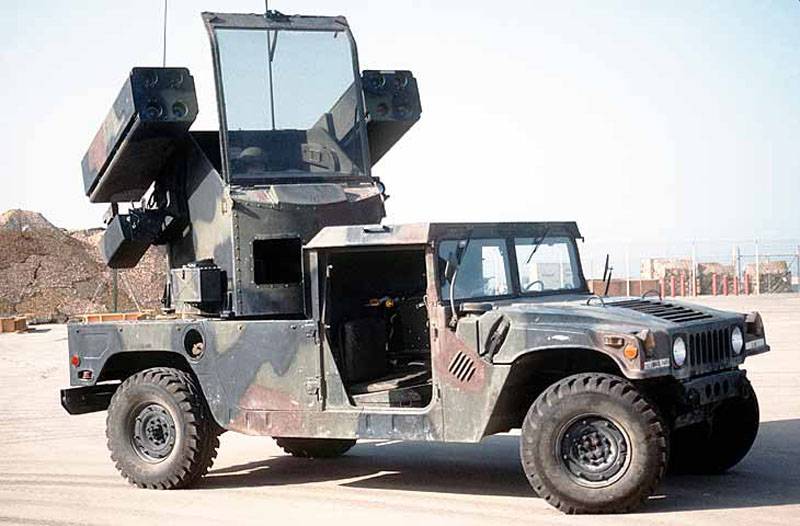
Fully automated anti-aircraft complex near air defense Boeing TWQ-1 Avenger is in service with the American army. Each launch canister has a ground-to-air Stinger 4 rocket which can be launched while the platform is moving.
New Russian mobile anti-aircraft complex Gibka-S. The system consists of several launchers plus a reconnaissance and command vehicle platoon commander. The fighting vehicle of the detachment (BMO) is an armored mobile vehicle of the anti-aircraft gunners department of MANPADS with standard weapons, ammunition and equipment of the BMO. It is intended for the defense of combined-arms units from air attack weapons flying at low and ultra-low altitudes, with all types of combat, during the day, at night, and on the march. An important advantage of a combat vehicle is that it can use both the latest Verba and the Igla-S, which is used by the armies of many countries, including the Russian army. In ammunition includes eight missiles, four of them are placed on the launcher. The work of the LMC is as automated as possible. Combat use mode - autonomous or under control of command posts from the basic set of Barnaul-T
The heaviest and largest air defense system for today is the Russian Tor-M1 complex produced by the Almaz-Antey concern and its latest version Tor-M2; both are armed with no less than 12 ground-to-air missiles 9M331. The high-explosive missile warhead of the rocket and the active remote fuse make it possible to destroy moving targets at a speed of 700 m / s and at a height of 6000 meters within a radius of 12 km. The complex can fire at targets from a short stop for three to five seconds. The anti-aircraft missile system is based on the tracked 9A331 combat vehicle (GM-5955 type chassis), which can reach speeds on the highway near 65 km / h and has a cruising range of 500 km. Served by the crew of the 4 man, including the driver commander and two operators. The cockpit is located in the front, and the tower is installed in the center of the vehicle, a surveillance radar providing 90 ° coverage is installed in the rear. The machine is also equipped with a K-band Doppler radar with a phased array antenna, which has a range of 25 km.
As for light systems, the Russian company KBM has developed a new anti-aircraft complex Gibka-S, which can adopt the newest portable anti-aircraft missile system 9K333 Verba (adopted for use in 2014 year). The Gibka-S anti-aircraft complex is designed to provide the armed forces with mobile short-range air defense systems. The new self-propelled anti-aircraft system consists of several launchers on the basis of a wheeled armored car Tiger and vehicle intelligence and control. An important advantage of a combat vehicle is that it can use both the latest Verba and the Igla-S, which is used by the armies of many countries, including the Russian army. In ammunition complex eight missiles. Four of them are placed on the launcher. The work of the LMC is as automated as possible. The combat use mode is two: autonomous or under the control of command posts.
The reconnaissance and command vehicle of the platoon commander (MRUK) is intended for the automated control of the actions of the anti-aircraft gunners of MANPADS. The composition of MRUK includes small-sized radar "Harmony". MRUK allows you to quickly interact with higher command posts and manage six subordinate combat vehicles or four divisions of anti-aircraft gunners equipped with 9-X935 automation equipment sets. The guaranteed range of communication MRUK with BMO is 17 km while parked and 8 km while driving.
The Poprad, a rather similar in concept, anti-aircraft unit from the Polish company Bumar Electronics, is capable of striking air targets at low and medium altitudes. It is armed with four Mesko Grom launchers, although MANPADs and other types can be installed. The fire control system includes an optoelectronic station with an infrared camera and a laser rangefinder, as well as the “friend or foe” NATO standard system. The installation is equipped with navigation and data transmission systems, which allows the installation to be integrated into a comprehensive air defense system. By default, the Poprad complex is based on the Zubr wheeled armored vehicle, but can also be installed on other platforms, including armored personnel carriers. The Grom rocket has a range of up to 5500 meters and a maximum height of 3500 meters. The Polish Armaments Inspectorate confirmed that the Poprad system was tested with the new Mesko Piorun rocket from ZM Mesko, which will eventually replace the Grom rocket.
The new close-range air defense system Poprad of the Polish company Pit-Radwar with Grom missiles is able to fight air targets in any weather conditions at any time of the day at distances up to 5500 meters and at altitudes up to 3500 meters. The complex can be adapted as a separate component of an integrated air defense system.
"Eurorachetchik" MBDA
In addition to the VL Mica near-air defense complex, based on the Mica IR / ER air-to-air missile (photo below) to hit highly mobile targets at short and medium distances with infrared and radar guidance, which today is part of the armament of the multi-purpose Rafale fighter and Mirage 2000 fighter of the later series, the company MBDA is one of the creators of the most close-range defense systems Atlas-RC and MPCV. These complexes are based on the Mistral 2 ground-to-air missile, which is capable of intercepting a variety of air targets at altitudes exceeding 3000 meters, including targets with low thermal signs of visibility. It is reported to have a high percentage of lesions and high effectiveness against maneuvering air targets (also moving along the ground).
MPCV (Multi Purpose Combat Vehicle - a multi-purpose combat vehicle) is a complex of the newest generation with high firepower, designed for ground-based anti-aircraft operations at super-close distances. Its task is to give anti-aircraft units a simple weapon system that combines high mobility, good crew protection and high firepower. The basis of the complex is an automated tower mounted on an armored vehicle. The tower includes opto-electronic sensors, a small-caliber gun and four Mistral 2 missiles ready for launch, which can be launched from the control console installed inside the machine. This weapon system with the latest Mistral 2 short-range ground-to-air missile was tested on a variety of highly maneuverable armored vehicles. High mobility and short response time, just two seconds, increase the anti-aircraft capabilities of massive defense.
A unit of four MPCV complexes needs less than 15 seconds to bombard 16 with various targets flying from any direction. With the complex can work as a single operator, and the calculation of two people, including the commander. The gyrostabilized MPCV optoelectronic station was developed by Rheinmetall Defense Electronics. It consists of television and infrared sights, a laser rangefinder and automatic target tracking, which allows to monitor at any time of the day. MPVC is also equipped with a TL-19 248-inch fire control display, a human-machine interface operator panel, a TX-17 commander's 243 display, recorders for task analysis and training, and a fiber-optic communication channel for remote work in safe conditions . The MPCV integrates the Thales VHF PR4G F @ stnet radio station with data and voice messages that it can transmit at the same time even in the most difficult interference environment.
The MPCV modular architecture allows the system to integrate into a coordinated fire control network and be part of digital forces. In order to increase the MPCV’s amazing capabilities, MBDA has developed the Licorne compact, lightweight operational control system designed for ultra-close air defense systems armed with Mistral missiles. The highly mobile control system originates from IDA-MCP and PCP systems also developed by MBDA. It provides a high level of coordination of ultra-close air defense systems and is well suited to the needs of quick raids or amphibious operations on land or sea. The system can provide complete operational information for decision-making, including local air conditions, threat assessment and their priority. The Licorne system can be integrated with a wide variety of infrared sensors and light radars, after which it becomes a full-featured complex for monitoring, detecting and identifying targets.
The base chassis was developed by MBDA in collaboration with Rheinmetall Defense Electronics (RDE). The current MPCV complexes are based on Renault Trucks Defense Sherpa 3A all-terrain vehicle, but can be installed on other armored vehicles with a minimum tonnage of 3. After a series of pilot launches in 2010, the final qualification of the MPCV system was announced. These tests ended with live firing against a number of targets representing multiple air attacks. The first production MPCVs on the Soframe chassis were delivered to the Saudi National Guard in 2013.
The ideal and natural complement of the MPCV complex at the brigade level is the tactical antenna Ground Master 60 with S-band phased array from the Thales Ground Master family, optimized for aerial surveillance and target designation of weapons systems, ranging from a single artillery gun and ending with an advanced short-range air defense system. This lightweight radar, distinguished by reliability, is designed for a wide range of tasks, from mobile combat operations to the protection of stationary strategic facilities. It can search for targets while moving, providing troops with dynamic situational awareness. The radar possesses some of the world's best detection characteristics of the most difficult targets at short range, in particular low-flying targets with a low level of unmasking signs (flying helicopters, UAVs, cruise missiles, etc.).
The ground-ready 60 radar station, ready for operation, is capable of providing a protective dome over ground forces on the march, has a range of 80 km and a ceiling up to 25 km, has a minimum detection range of 900 meters and can accompany up to 200 highly mobile air targets. It features an effective noise immunity system and a fast frequency tuning mode, which dynamically detects and monitors silencers in order to select the least muffled frequency.
MBDA’s MPCV complex is the only modern, thoughtfully designed, close-range air defense system on the world market. Currently being studied by Chinese industry, always greedy for making copies of European advanced projects. Wait and see.
Materials used:
www.shephardmedia.com
www.mbda-systems.com
www.almaz-antey.ru
www.kbm.ru
www.boeing.com
www.pitradwar.com
pvo.guns.ru
www.warfiles.ru
I www.wikiwand.co
pinterest.com
www.wikipedia.org
en.wikipedia.org
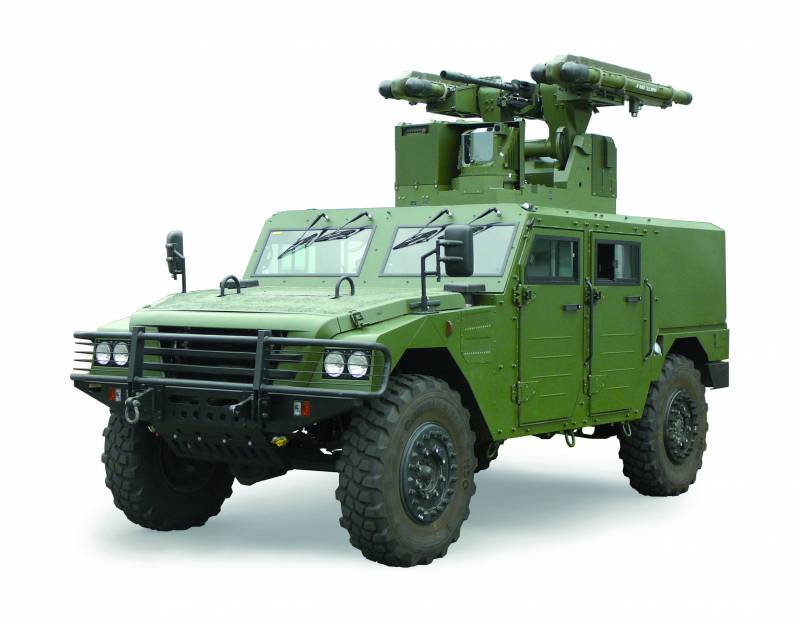
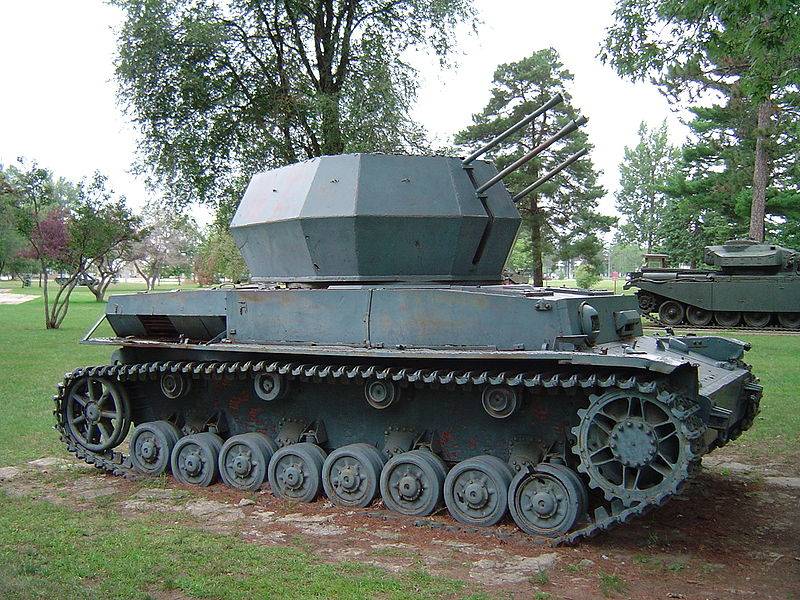
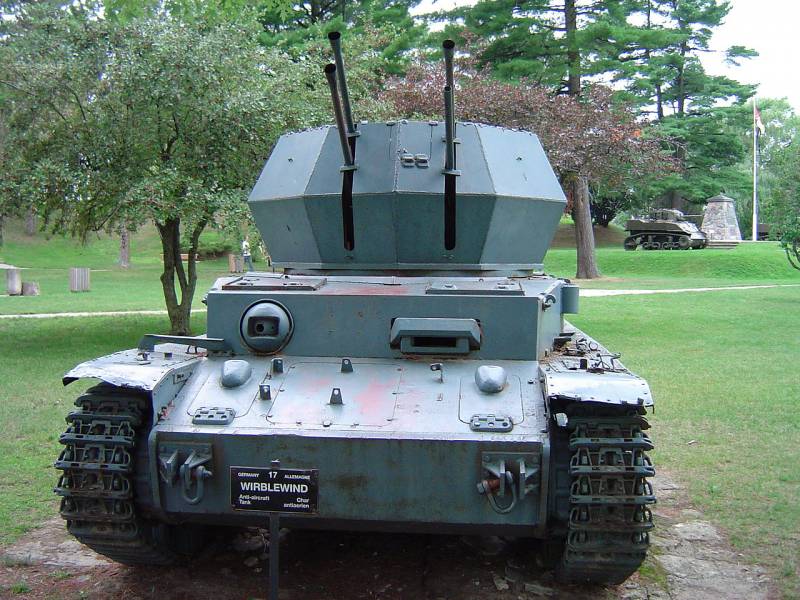
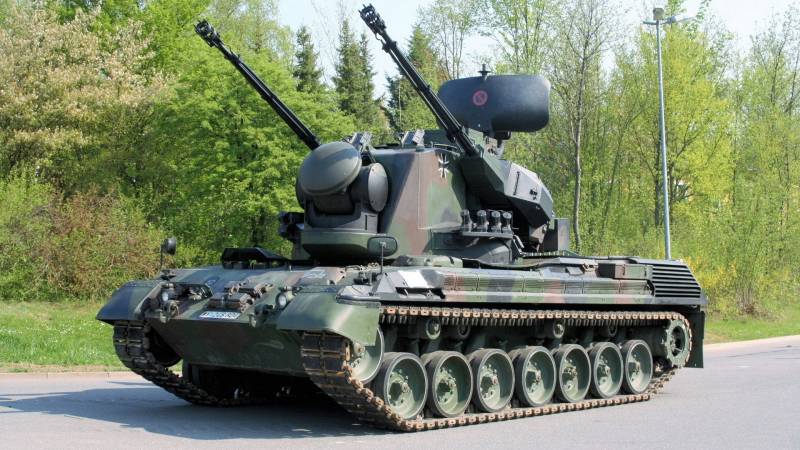
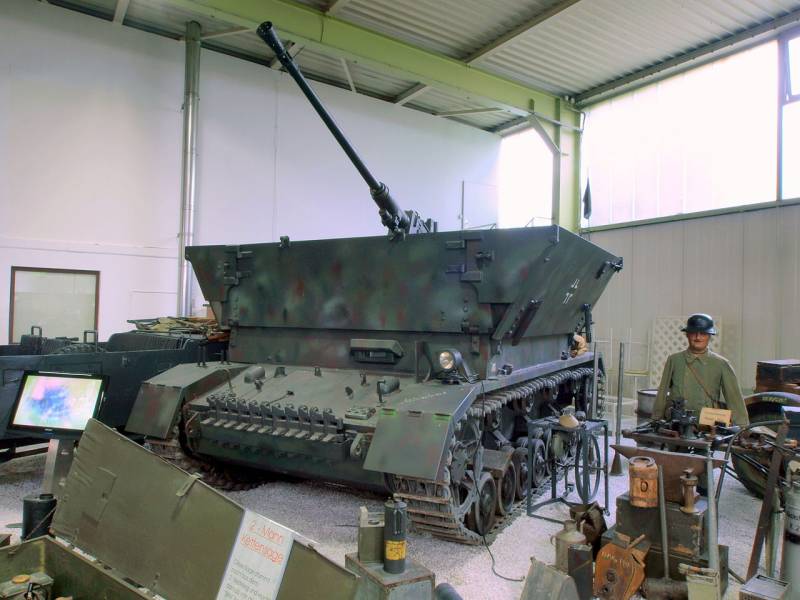
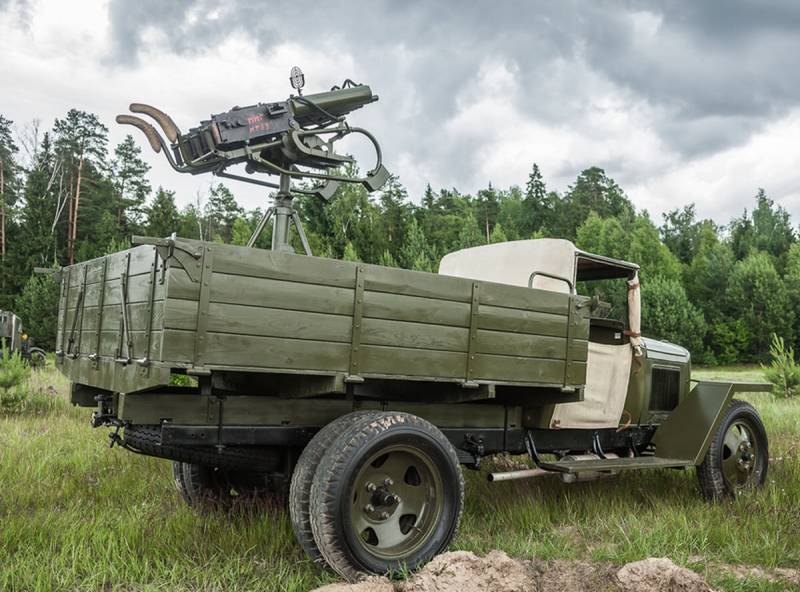
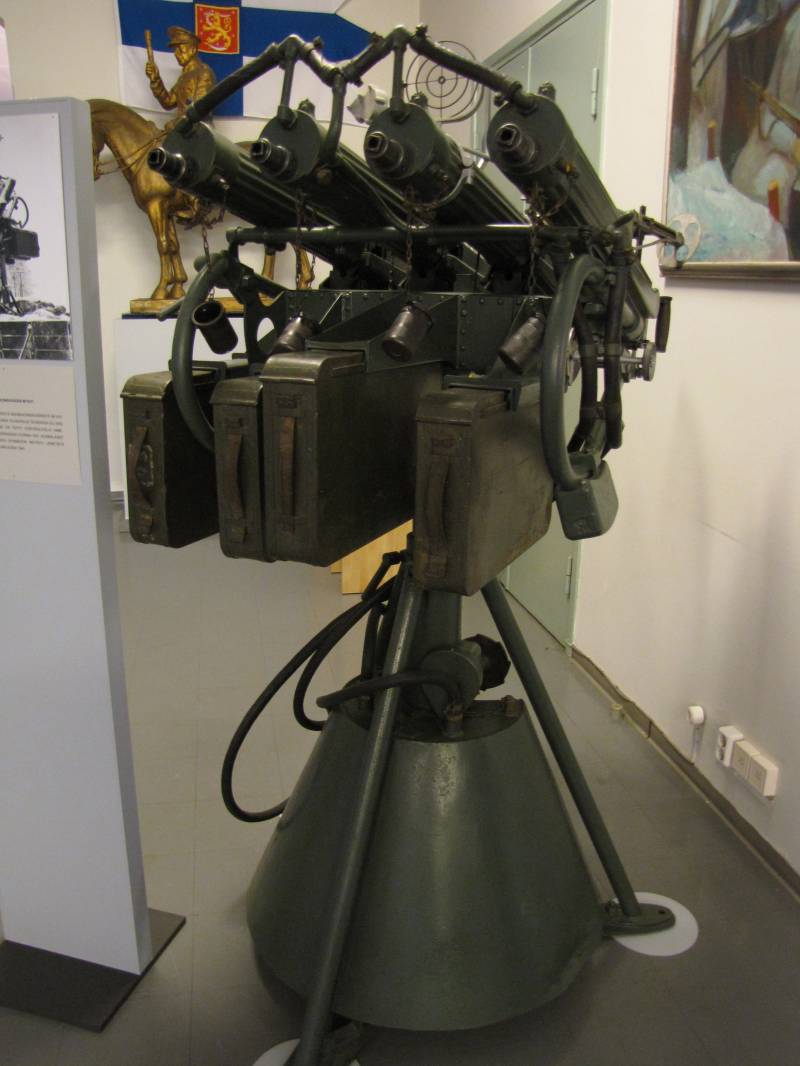
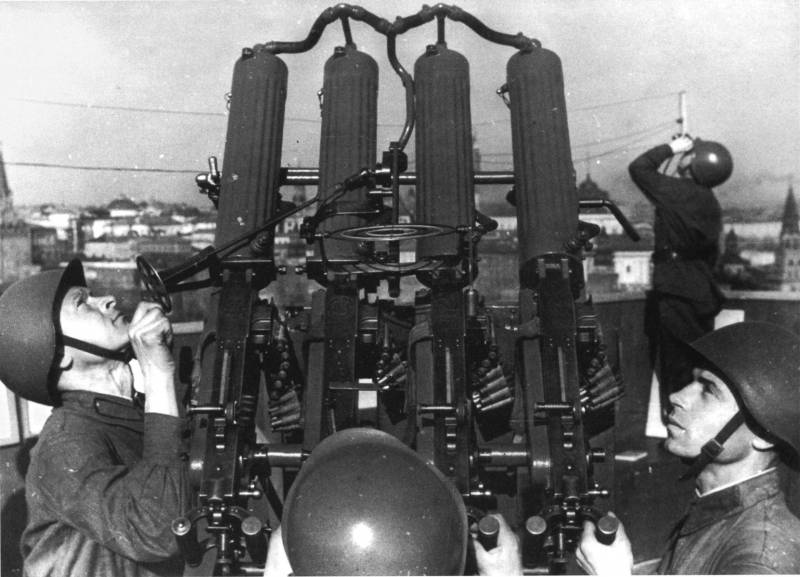
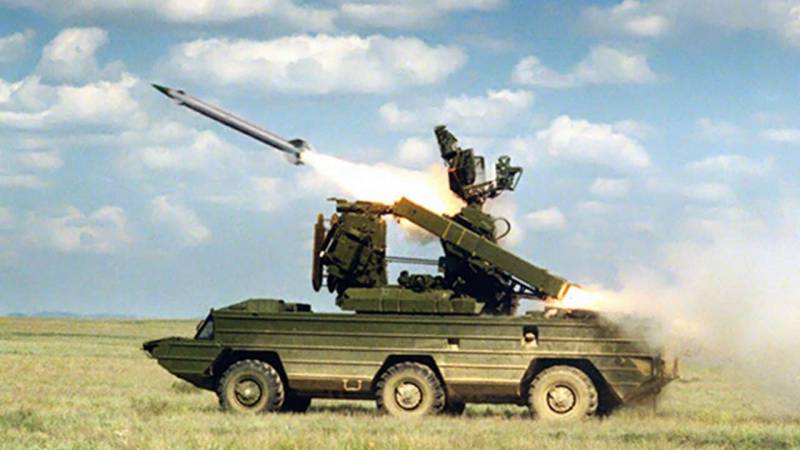
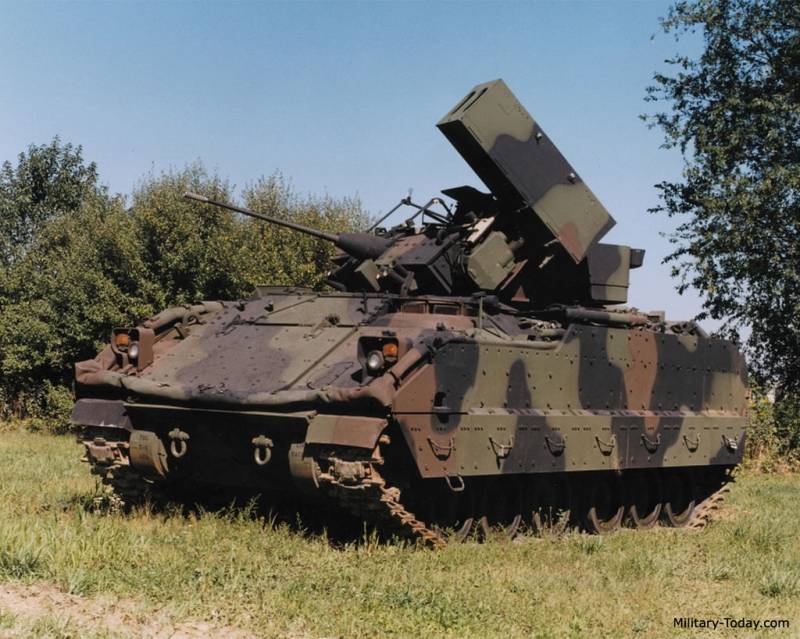
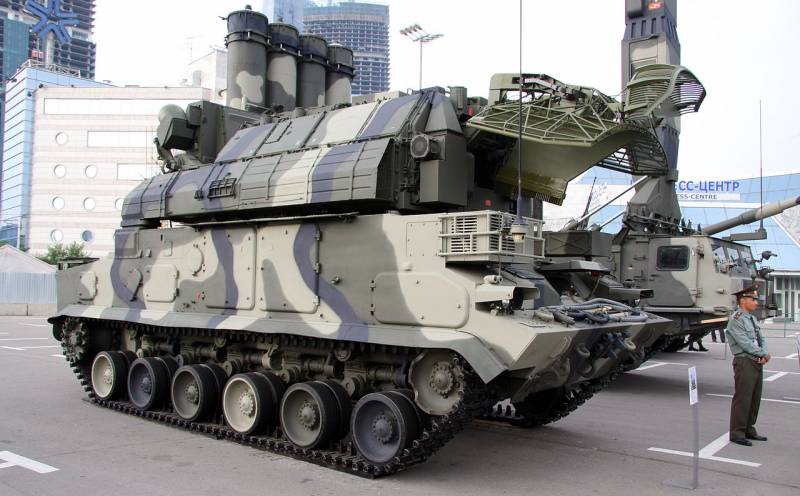
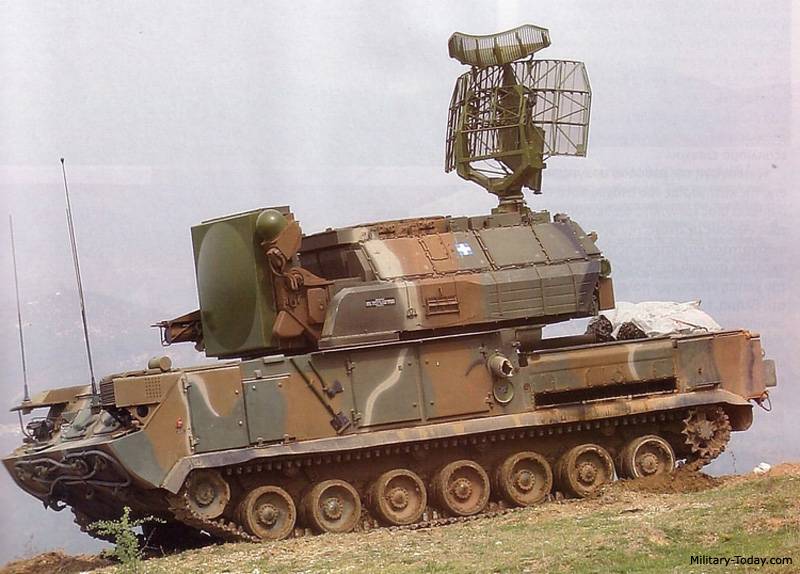
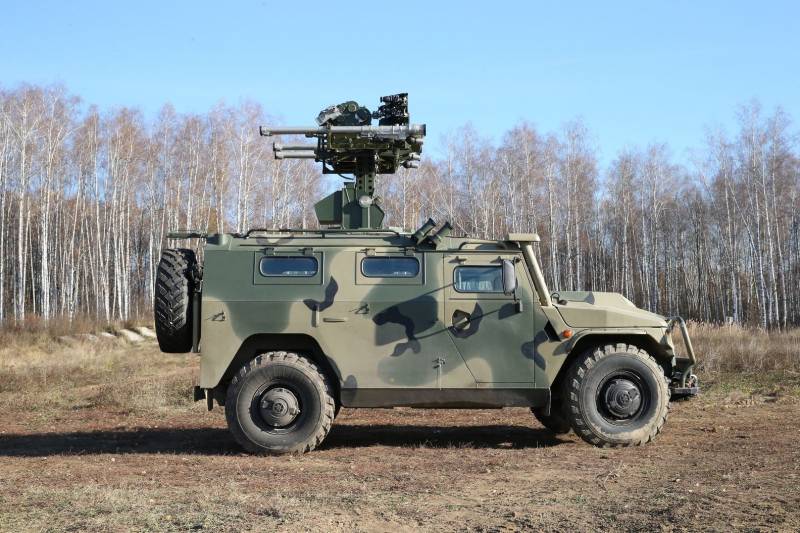
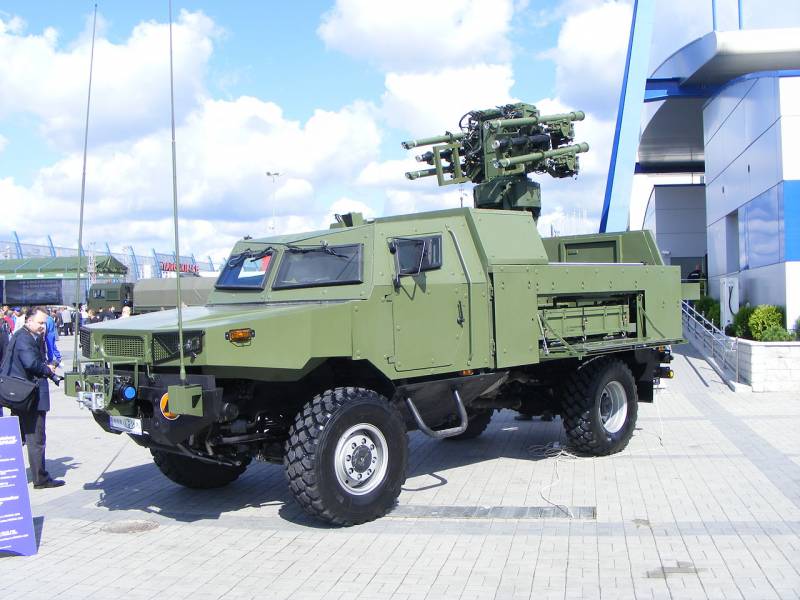
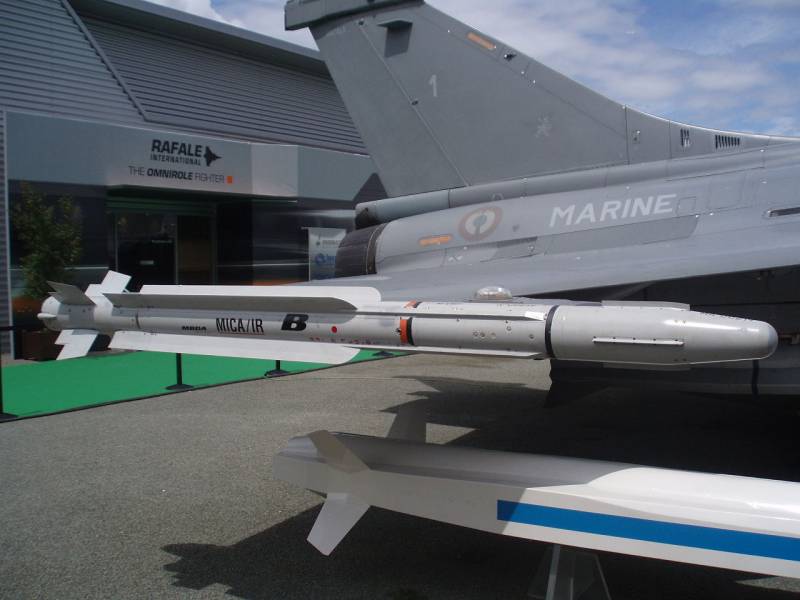
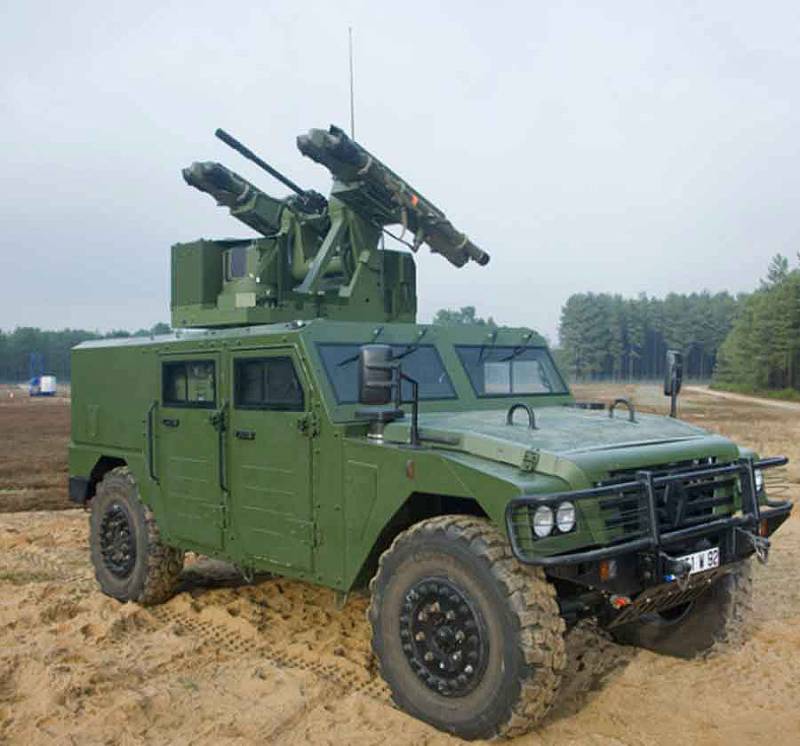
Information